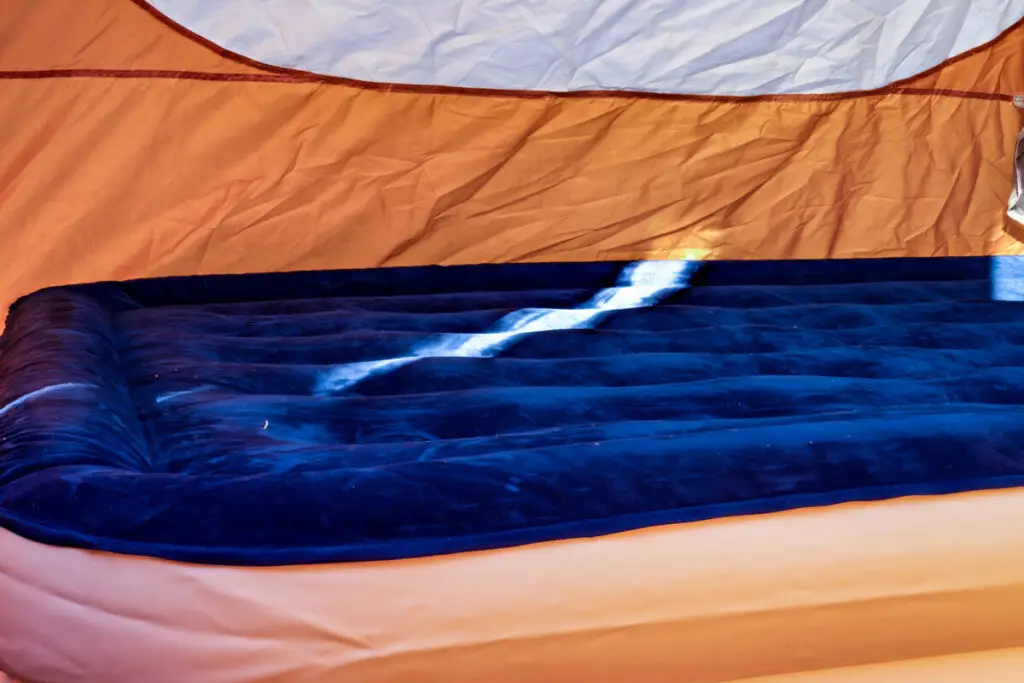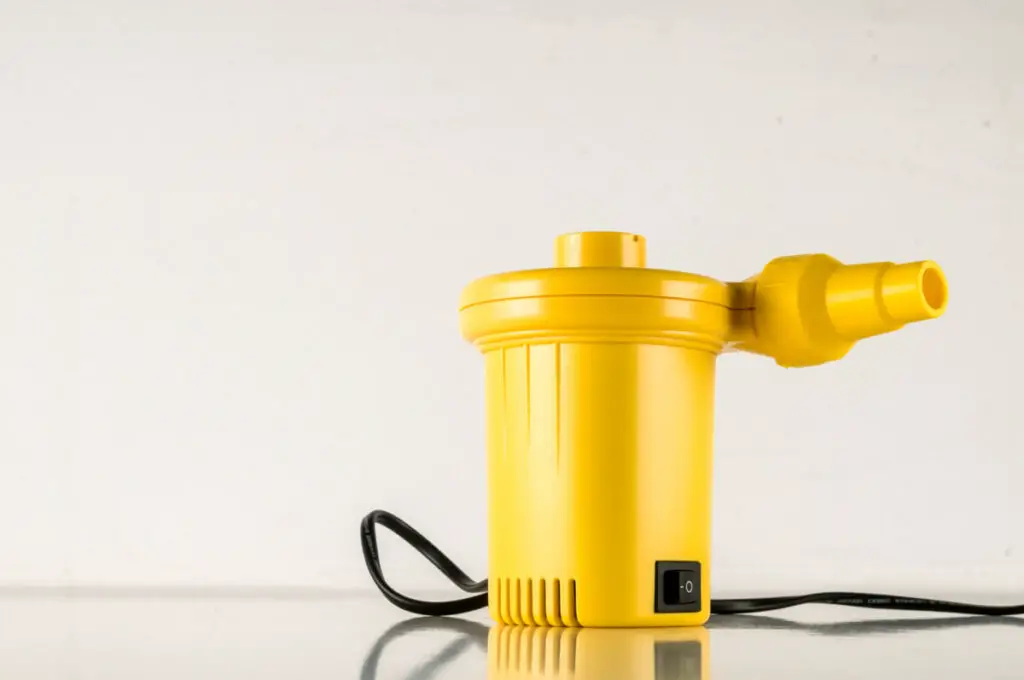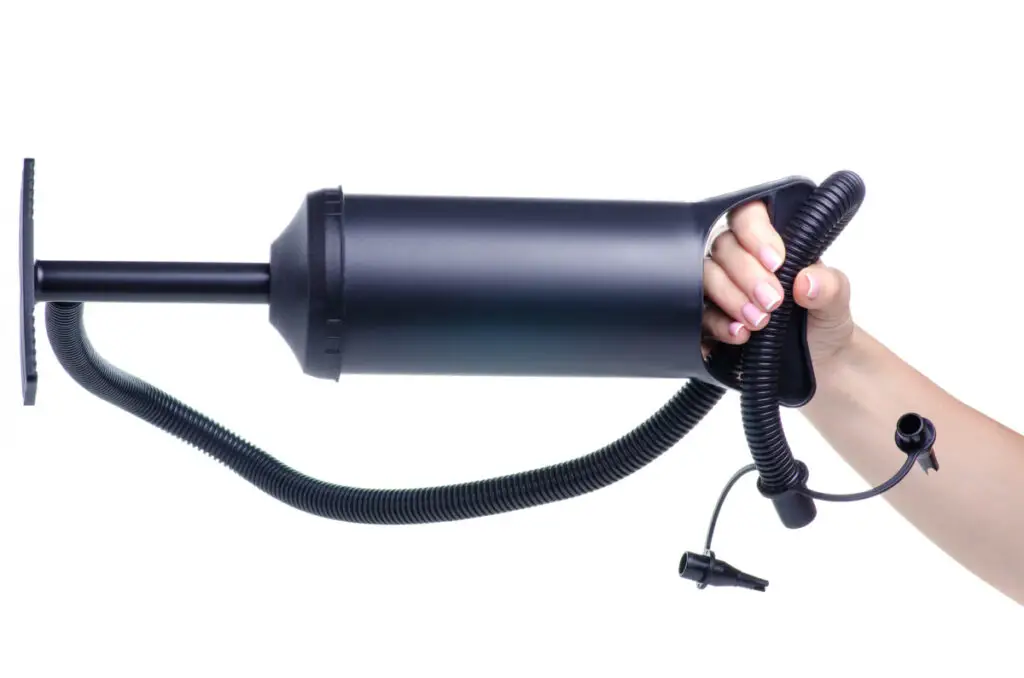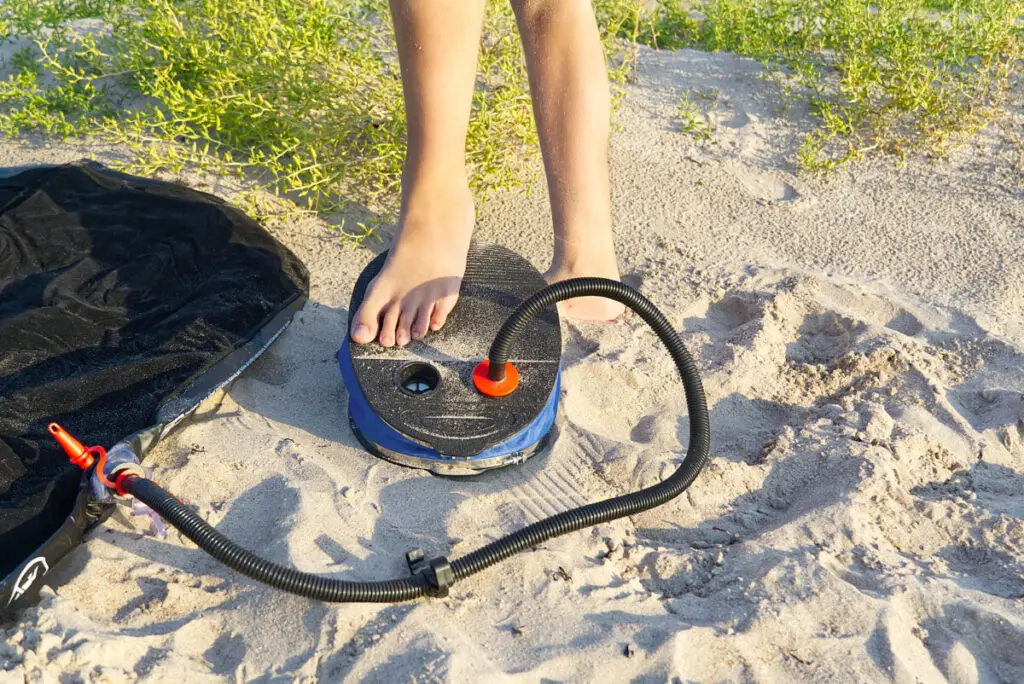
Connecting with nature through camping is not always easy on the back, especially as a person gets older. Bringing a portable air mattress to roll your sleeping bag onto is an easy way to hold on to comfort— and mobility— while sleeping without full-on glamping. However, packing an air mattress brings up another dilemma: how to inflate it once you have reached the campsite?
The easiest way to inflate an air mattress anywhere is by using an electric air pump. There are portable electric pumps made specifically for campers. However, camping doesn’t always afford access to electricity. For those times, there are still plenty of options to inflate a mattress.
Camping at a site without electricity is not an automatic sentence to sleeping on the hard ground, nor does it mean you have to fill the air mattress up at home and wrangle the light-but-bulky frame all the way to the campsite. Let’s take a look at a few methods of inflating an air mattress while camping, ranging from easy to desperate.
Easiest Way

Of course, the easiest and fastest way to inflate a portable air mattress is to bring an electric pump to do the work for you. There are a few different options for types of electric pumps, some being more practical for camping than others. For example, air pumps with an external plug-in require a source of electricity, while air-pumps meant for travel can connect to your vehicle’s 12V plug.
When planning on using an electric pump, the first thing you should consider is where your electricity will come from. State parks and other camping places will often list electricity among the amenities available at certain campsites. Some state parks will have a source of electricity you can plug into near the campsite, while others may have electricity available only at certain points. Either way, this makes preparation a necessity.
One way you can get around the “too far away from the outlet” problem is to bring the air mattress right up to the outlet and inflate it there, transporting it back to your campsite when finished. However, this solution may not work for everyone, depending on the size of the mattress and tent in question. If the inflated air mattress will not fit through the tent opening, you will need to get creative. Bringing the tent along with the air mattress to the outlet so it can inflate inside the tent and then transporting both back is one way to get around it.
Packing an extension cord could alleviate this issue as well, again depending on how far your campsite is from the electrical source. If it is relatively near, you could reduce or even eliminate the distance needed to travel to inflate the mattress. However, this is not a catch-all solution. Some people prefer to bring a generator with them, which reduces your dependence on outside sources. However, generators are expensive and bulky, so it might not be the best decision to acquire one solely to power an air pump.
A simpler choice would be to go with a 12V plug-in air pump. This can be connected to the outlet in the auxiliary power socket, making them ideal for traveling situations. The only drawback is that the campsite would need to be near your vehicle, something that is not always possible depending on how ambitious your camping trip is. However, it does come with the added bonus that you would not need to worry about packing extra batteries, like with our next option. Just maybe leave the car running while you use it, so as to be certain you do not run the vehicle battery down.
A battery powered pump is the final form of an electric air pump that you could use. These pumps are really good choices for situations where you will be traveling away from vehicles or other possible sources of external electricity. A further step you could take to ensure your pump does not fail you is to use rechargeable batteries, reducing the need to replace them periodically, saving you both time and money. Some rechargeable batteries can be charged in a solar power bank, making charging on the go much simpler. Even still, you should always take the precaution of packing a few extra batteries, just in case.
Easy Enough


The classic way of inflating an air mattress is via a manual pump. These can be either hand or foot operated. A far easier option than inflating it breath by breath— which can make a person dizzy or lightheaded after a while— hand or foot pumps are a good tool to have around. Whether it is so you do not have to bother with electricity or simply as a backup, manual pumps should definitely be on your packing list.
Manual pumps function by inserting a tube or nozzle into the valve for the air mattress and pressing up and down on the handle or pump on the tool. Hand pumps do this by raising and lowering a handle, forcing air from the chamber within the pump into the mattress. A foot pump also forces air from a chamber into the mattress, but the chamber re-inflates itself once the pressure of the foot is released, decreasing the amount of work you need to do.
There are some manual pumps made specifically for air mattresses, while others, like bike or ball pumps, are not. This should not necessarily stop you from successfully inflating a mattress with one, it just may take a bit longer. For bike or tire pumps, this may prove more difficult, as they are made to fit a much smaller valve. Any air pump, automatic or otherwise, can fill up an air mattress as long as you create a seal between the mattress plug (where the air goes in) and the pump.
Inflating a full-size or double high mattress with a manual pump would not be very fun, but also would not pose too much of a real problem, beyond a small amount of arm or leg fatigue. If you are not camping alone, you could take turns pumping air into the mattress with your fellow campers. Alternatively, it could be a better idea to stick to smaller mattresses, as they take up less space and less energy (whether human or electric) to fill up.
Backup
So you have made it to your campsite, the tent is set up, and you have your extension cord safely connected to the power source. You go to inflate your air mattress, but see that in the rush of packing the vehicle, you left the pump itself at home. This does not need to signal the transition to pumping the mattress up manually for the next half-hour or so. As mentioned before, any kind of pump with a seal can inflate an air mattress.
If (for some reason) you happen to have a hairdryer on you at camp, a camping buddy can form a seal over the mattress plug with their hands or jerry-rig a plug with a plastic water bottle as you operate the hairdryer on the coolest level. Strange though it seems, this method definitely works! Hairdryers typically are not made to run for long though, so you may want to periodically give it a rest, safely closing the mattress valve so that the air already accumulated in the mattress does not escape. A similar method could work for vacuums, though they seem more unlikely to have on hand at a campsite than a hairdryer.
For campers at a campsite in close proximity to others, you can always rely on the old standby: asking for help. With such a large collection of people camping in one place, it is likely that at least one person will have a pump you might borrow. People at campsites are typically polite about helping one another. Do not be afraid to reach out if your plans do not work out as you had intended.

Desperate
If you run out of options, you are alone or far away from anyone with an air pump of some kind, you can just use your breath to fill up the mattress. It may be a good idea to clean the valve before putting your mouth on it, especially if the mattress has been used before, camping or not. Though not impossible, this method takes a long time and can be difficult and headache-causing.
Some air mattresses are constructed with one-way valves through which they are inflated, making it so that air cannot escape the same way it gets in. If possible, try to pack one of these, as opposed to an air mattress that relies on a constant intake of air to stay inflated until sealed again. Stopping to take a breath when you are lightheaded can be very costly to all the efforts you have already put forth if the air just wants to escape right back out where it came from.
One way to circumvent that particular issue if your air mattress is an older model is to control your breathing. Instead of big gulps of air, breathe deeply in through your nose and out through your mouth like a trumpeter does, limiting the amount of air that can escape as you continue to inflate the mattress. You can also save more energy by using your cheeks as a kind of chamber, filling them and expelling them instead of breathing directly out into the valve.
Some sleeping pads made for camping are inflatable to a small degree. In those cases, inflating the mat with your breath is actually preferable to using an air pump. It is less likely you will over-inflate or struggle to fit the pump to a valve it is not intended for when you just resort to good-old-fashioned breathing. For short-term camping trips, it could be worth considering opting for the smaller, lighter sleeping pads than a bulky air mattress.
If you do not feel that your lungs are quite up to the challenge of painstakingly filling up an air mattress over a large chunk of time, there is one more thing you might try. If all else fails, you can inflate the air mattress with a plastic bag. Yes, really! This process does not even require you to breathe any harder than you otherwise would! Perhaps that sounds a bit too fantastic.
The whole process is quite similar to how children will twist plastic bags of fruit at the grocery store so that they become tight like a balloon so they can giggle when it makes a loud “pop.” If you want a closer example to air pumps to feel comfortable, think of it as similar to how a foot pump functions. Let me explain.
Use the largest unbroken plastic bag you can find— think garbage bag sized, not ziplock sized. Taking it firmly in both hands so it does not fly away, shake it open in the wind, catching as much air in it as you can. When it is as full as you can manage, clamp the opening shut tightly and twist it so that the air stays securely inside.
Place the opening of the bag over the air mattress intake valve, creating a seal as best as you can. An easy way to do this is to secure it with a rubber band or a hair tie, folding the band over itself and stretching it over the top of the bag before securing it over the valve, so you don’t have to expel any air while securing it.
When you feel confident the seal is decent, untwist the bag and push down on it, pushing the air into the mattress. Cover the mattress plug while you “gather more air” so that it will not escape. This should be repeated until the bed is inflated enough to be comfortable. You can watch this video on YouTube for a clearer demonstration of how the process works.
Hopefully, your camping trip does not force you to come to the “desperate” section of our tips, but just in case (or just for fun!) here they all are. Go forth and be comfortable camping!

